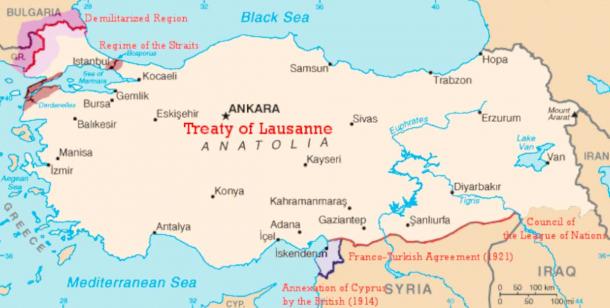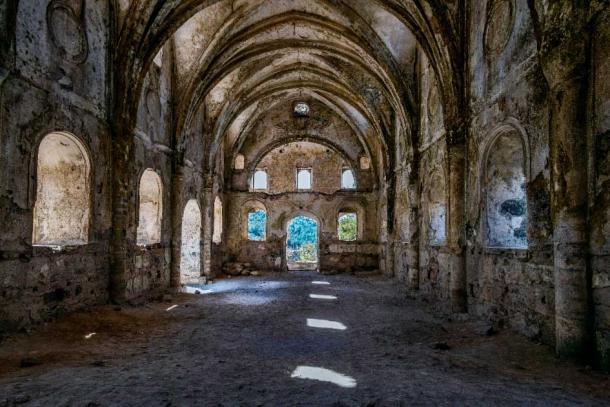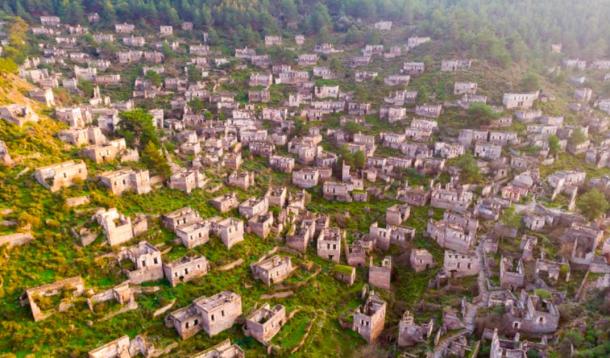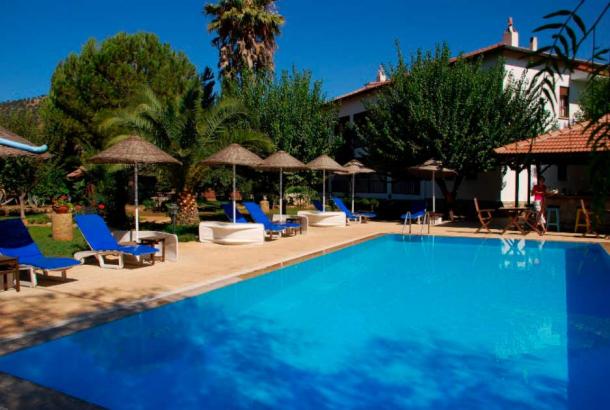
Kayakoy: An Abandoned Ghost Town Opens For Tourismi
Since the beginning of time, cities have been built and abandoned for countless reasons. War, famine, drought, and more have led communities to flee and relocate to regions that better suit their needs. One example of this is the ghost town of Kayakoy, which was abandoned in 1923, after a treaty signed by the League of Nations. Below, we’ll talk about the history of Kayakoy and the events that led to Kayakoy to its current resting place as a relic of history.
From Prosperity to Demise
Kayakoy, once a thriving Greek village named Leivissi, holds a dark history. Found in the southwestern region of Turkey, Kayakoy was originally founded in the 18th century by a group of Greek Orthodox Christians, who had migrated from the nearby island of Rhodes. Kayakoy eventually grew to be a flourishing community, filled with several churches, a school, and a bustling market. At one point, the town was home to over 10,000 people, including Greek Orthodox Christians and Anatolian Muslims. However, fate had other plans for this picturesque village.

The haunting ruins of Kayakoy, located on a beautiful hillside (Darinwek / CC BY SA 3.0)
In the early 20th century, Kayakoy was affected by several tragedies that led to its ultimate demise. The first was the Greek genocide by the Ottomans, which significantly impacted the town during World War I. As World War I ravaged the Ottoman Empire, the Greek genocide decimated the population of Kayakoy, massacring nearly 6,500 Greek Orthodox Christians. This genocide significantly diminished the population of Kayakoy, both due to death and families fleeing for safety.
In addition to the Greek genocide, tension continued to simmer between the countries of Greece and Turkey. Each country had a large population of minorities belonging to the other country, which led to ongoing strife due to territorial disputes over the remaining Ottoman territories in Europe and Asia. These disputes were fueled by nationalistic sentiment on both sides, as well as by economic interests within both countries.
To solve this issue, both Greece and Turkey decided to implement a plan as part of the Treaty of Lausanne, which was carried out under the supervision of the League of Nations. The Treaty of Lausanne was a peace treaty signed between the Ottoman Empire and the Allied powers (Greece, Great Britain, France, Italy, Japan, and Romania) on July 24, 1923. This treaty marked the end of the conflict between the Ottoman Empire and the Allied powers that had begun during World War I. The treaty was a comprehensive settlement that dealt with a wide range of issues, including the status of the Ottoman Empire's territories in Europe, the Middle East, and Africa, the rights of minorities, and the issue of reparations.
Greece and Turkey’s plan was to engage in a population exchange between their countries. The minorities in each country were often suspected of being loyal to their respective motherlands rather than to their host countries, leading the government to seek ways to return them to their original countries. The agreement stipulated that the Greek Orthodox Christians living in Turkey, including those in Kayakoy, would be forced to leave their homes and migrate to Greece, in exchange for Muslim Turks living in Greece.

Borders set on paper can cause chaos in the real world. The town of Kayakoy, Turkey was ordered to be abandoned by the Treaty of Lausanne in 1923. A map of Turkey after the Treaty of Lausanne (Public Domain)
A Plan Best Left Unexecuted
While Greece and Turkey certainly had an interesting thought process behind the population exchange, it was not executed well. The population exchange was implemented in a forced and chaotic manner, with families given little time to prepare and many losing most or even all of their possessions. Approximately 300,000 Turks and 200,000 Greeks were forcibly uprooted, resulting in cities like Kayakoy becoming abandoned. The forced displacement caused significant hardship for the people affected by it, and it also led to a significant loss of cultural heritage and the destruction of several communities.

Abandoned church in Kayakoy also known as Karmilissos or Ghost Town. (Leventina / Adobe Stock)
After being forced out of Kayakoy, the Greeks who had lived there were forced to resettle in Greek Macedonia and Thrace. While most of these families were provided with land and housing, these houses either did not contain any belongings, or contained only those left behind by the Muslim refugees leaving Turkey. Most families had to completely start over and collect new furniture, tools, and other belongings to establish themselves in their new community.
In the end, the village of Kayakoy was left abandoned, and the Greek Orthodox Christians who had lived there were forced to start anew in Greece, leaving behind their homes, businesses, and way of life. The eerily abandoned town of Kayakoy later faced greater destruction in 1957, when it was affected by the Fethiye earthquake. Some of the stone buildings had received significant damage, with nobody left behind to rebuild them. However, many of the buildings were strong enough to withstand the earthquake, so they still stand to this day.

The remains of Kayakoy, after withstanding the impacts of war, abandonment, and earthquakes. (JackF / Adobe Stock)
Preserving the Past: Kayakoy Still Stands
Today, the abandoned stone houses and churches of Kayakoy still stand as a silent reminder of the village's past atrocities and the forced displacement of its inhabitants. Because it still remains, it is now a popular tourist destination and is protected as a historical monument. The Turkish government has worked to preserve the abandoned town, and in 2014, announced plans to develop the village with a new hotel and additional tourist facilities.

Tourism is being developed in the area. The Villa Rhapsody hotel is located just half a mile (1 kilometer) from the abandoned ghost town of Kayakoy (Tanya & Arthur / CC BY NC ND 2.0)
Visitors to Kayakoy can tour the village and see the well-preserved houses and churches, which give a glimpse into the village's history and way of life. Although some of the buildings are now used as hotels and restaurants, the majority of the village remains abandoned. This also makes it a popular location among photographers and filmmakers.
If you ever find yourself in Turkey, be sure to check out this fascinating historical town. Its history and architecture will certainly amaze you.
Top image: The abandoned and earthquake-damaged ruins of Kayakoy have become a tourist attraction. Source: Nullplus / Adobe Stock
By Lex Leigh
References
Akatay, J. October 18, 2010. Abandoned Kayaköy: a symbol of war's painful consequences. Daily News. Available at: https://archive.ph/20130125155121/http://web.hurriyetdailynews.com/n.php?n=the-abandoned-town-of-kayakoy-a-symbol-of-painful-consequences-of-war-2010-10-13
Doumanis, N. 2013. Before the nation: Muslim-Christian coexistence and its destruction in late Ottoman Anatolia. Oxford University Press.
Patten, B. June 11, 2005. The Idyllic Town That Time Forgot. The Independent Europe RSS. Available at: https://web.archive.org/web/20090829132135/http://www.independent.co.uk/travel/europe/the-idyllic-town-that-time-forgot-494112.html
Warkentin, E. August 4, 2014. Turkey's Religious Ghost Town. BBC Travel. Available at: from https://www.bbc.com/travel/article/20140626-turkeys-religious-ghost-town
Yalav-Heckeroth, F. December 26, 2022. The Story behind Turkey's Abandoned Religious Ghost Town. Culture Trip. Available at: https://theculturetrip.com/europe/turkey/articles/the-story-behind-turkeys-abandoned-religious-ghost-town/















